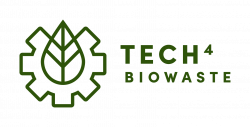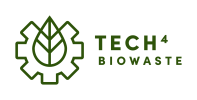Ionic liquids
| Technology | |

| |
| Technology details | |
| Name: | Ioniq Liquids |
| Category: | Pre-processing (Chemical processes and technologies) |
| Feedstock: | Lignocellulosic biowaste |
| Product: | Lignin |
Ionic liquids are organic salts that are liquid at room temperature. Because they are salts, they show no volatility. Moreover, they show a high thermal stability as well. Both properties allows them to be used as green solvents and as and alternative to volatile organic compounds. These properties are useful in the pre-treatment of lignocellulosic material by dissolving the material and separating the lignin.[1] Lignin streams can also be dissolved to allow for further processing.
Feedstock
Origin and composition
Ionic liquids are capable of dissolving lignocellulosic biomass. Examples for biomass include corn stalks, rice straw, bagasse, pine wood, and spruce wood.[1] Next to lignocellulosic biomass, lignin streams can be dissolved for further processing.
Pre-treatment
Process and technologies
Ionic liquids have been shown to dissolve lignin or cellulose, because it can decrease the crystallinity and therefore makes it more accessible for further processing. Moreover, a full dissolution of lignocellulosic biomass can be used to extract the lignin. The technology can also be combined with hydrolysis to make the cellulose available as sugars for further processing.[1] Cellulose can be recovered from the solution by the addition of water, ethanol, or acetone, while the ionic liquid can be recovered by pervaporation, reverse osmosis, salting out, or ionic exchange.[2]
Product
The final product of the process depends on the exact combination of technologies. Generally, a large part of the lignin can be extracted from lignocellulosic material. Depending on the process properties it could also be that cellulose is more easily available for further processing.
Post-treatment
There are no post-treatment technologies known at the moment.
Technology providers
| Company name | Country | Technology subcategory | Technology name | TRL | Capacity [kg/h] | Reagent | Feedstock: Food waste | Feedstock: Garden & park waste |
|---|---|---|---|---|---|---|---|---|
| LIXEA | UK, Sweden | - | Dendronic® | 6 | 20 | Protic alkylammonium hydrogensulfate ionic liquids | ● | ● |
| proionic | Austria | - | Carbonate Based Ionic Liquid Synthesis - CBILS (aprotic, non-distillable ILs) & Method for processing a biomass material - HIPE-REC (protic, distillable ILs) | 4-5 | 10 | Aprotic (non-distillable ILs) and protic ionic liquids (distillable) | ● | ● |
| RISE | - | - | [Technology name (the "branded name" or the usual naming from company side)] | - | - | - |
LIXEA
| General information | |||
| Company: | LIXEA | 
| |
| Country: | UK, Sweden | ||
| Contact: | Dr Florence Gschwend
florence@lixea.co | ||
| Webpage: | https://www.lixea.co/ | ||
| Technology and process details | |||
| Technology name: | Dendronic® | Technology category: | Pre-processing (Chemical processes and technologies) |
| TRL: | 6 | Capacity: | up 20 kg/batch kg·h-1 |
| Dissolved component: | Lignin and hemicelluloses | Ionic liquid: | protic alkylammonium hydrogensulfate ionic liquids |
| Other: | not relevant | ||
| Feedstock and product details | |||
| Feedstock: | lignocellulosic biomass, including agricultural residues, forestry residues, waste wood from construction and dedicated biofuel crops | Product: | cellulose-rich pulp, lignin, furfural, acetic acid |
Lixea® is developing an innovative biomass fractionation process using low-cost ionic liquids. Currently, our society is heavily relying on the use of crude oil while products are discarded at the end of their lives. We want to change that, which is why we are developing novel chemical processes that enable us to live more sustainably in a clean world. Our first product is the Dendronic process that uses waste wood, agricultural by-products and sustainably grown biomass to produce a greener alternative to today’s petrochemical industry while providing unwanted waste materials with a new purpose.
proionic
| General information | |||
| Company: | proionic GmbH | ||
| Country: | Austria | ||
| Contact: | markus.damm@proionic.com or marcell.gyurkac@proionic.com | ||
| Webpage: | https://www.proionic.com | ||
| Technology and process details | |||
| Technology name: | Carbonate Based Ionic Liquid Synthesis - CBILS (aprotic, non-distillable ILs) & Method for processing a biomass material - HIPE-REC (protic, distillable ILs) | Technology category: | Pre-processing (Chemical processes and technologies) |
| TRL: | 4-5 | Capacity: | Up to 100 tons per year; 10 kg·h-1 |
| Dissolved component: | Selectively extract/dissolve Lignin (with distillable ionic liquids), Hemicellulose (both distillable and non-distillable), Cellulose (with non-distillable ionic liquids) or other valuable biomolecules (proteins, chitin, collagen) | Ionic liquid: | Aprotic (non-distillable ILs) and protic ionic liquids (distillable) |
| Other: | |||
| Feedstock and product details | |||
| Feedstock: | Agricultural waste (corn, hemp, flax, coconut, feather, wood residues, etc.) | Product: | Purrified Lignin and high purity Cellulose pulp |
proionic is the leading manufacturer of ionic liquids on large scale offering:
- innovative solutions and tailored ionic liquids for biomass dissolution as well as selective extraction of value added compounds;
- joint development of technologies for the pre-treatment of biomass and the valorization of obtained products with subsequent solvent recycling;
Two innovative patents for the green production of ionic liquids and their utilization for biomass applications:
- CBILS® is a unique ionic liquid production technology for waste-free, safe and economic production of ultra-pure ionic liquids;
- HIPE-REC® is a high performance recovery process for the separation of ionic liquid pre-processed biomass into solid an liquid fraction;
RISE
| General information | |||
| Company: | 
| ||
| Country: | |||
| Contact: | |||
| Webpage: | |||
| Technology and process details | |||
| Technology name: | Technology category: | Pre-processing (Chemical processes and technologies) | |
| TRL: | Capacity: | kg·h-1 | |
| Dissolved component: | Ionic liquid: | ||
| Other: | |||
| Feedstock and product details | |||
| Feedstock: | Product: | ||
After the LightFibre project showed that kraft lignin and cellulose can be dissolved in an ionic liquid and then wet-spun, the ConCarb project was started to convert lignin and cellulose into carbon fibers, which can be used in light weight composites.[3]
Open access pilot and demo facility providers
Currently no providers have been identified.
Patents
Currently no patents have been identified.
References
- ↑ a b c Sang Hyun Lee, Thomas V. Doherty, Robert J. Linhardt, Jonathan S. Dordick, 2009-04-01: Ionic liquid-mediated selective extraction of lignin from wood leading to enhanced enzymatic cellulose hydrolysis. Biotechnology and Bioengineering, Vol. 102, (5), 1368–1376. doi: https://doi.org/10.1002/bit.22179
- ↑ Valery B. Agbor, Nazim Cicek, Richard Sparling, Alex Berlin, David B. Levin, 2011-11-01: Biomass pretreatment: Fundamentals toward application. Biotechnology Advances, Vol. 29, (6), 675–685. doi: https://doi.org/10.1016/j.biotechadv.2011.05.005
- ↑ , : Continous stabilization and carbonization of lignin-cellulose for carbon fibers , Last access 30-8-2021. https://www.ri.se/en/what-we-do/projects/continous-stabilization-and-carbonization-of-lignin-cellulose-for-carbon-fibers